By Yanek Mieczkowski
“This mission is suicidal,” thought Bogdan Mieczkowski. In the autumn of 1944, the 19-year-old Polish resistance fighter battled in the Warsaw Uprising. Poles, although outnumbered and outgunned, rebelled against Nazi Germans who overran western Poland and seized the capital city. Mieczkowski’s unit now mounted an offensive to allow trapped comrades to escape from Warsaw’s Old Town section, where a Nazi counteroffensive pinned them down. With just eight soldiers and armed only with hand grenades, Mieczkowski thought they risked slaughter.
Two Polish engineers placed dynamite next to a wall separating them from the Germans and then ran across the street. An explosion blasted a hole in the wall, emitting an enormous dust cloud, and Mieczkowski and the others scurried through the opening. As they ran, a German machine gun opened fire. Mieczkowski felt his right arm jerk violently, and brick shards struck his upper thigh as bullets ripped out pieces of the wall, turning them into projectiles. “I hit the ground and looked at my hand. Instead of my right thumb, a flap of skin was hanging in its place,” Mieczkowski said. He had to continue fighting—only now he was bleeding profusely, his right thumb sliced off and leg pierced by shrapnel. World War II, which had devastated his family and the life he knew, was becoming deadlier every minute.
War Begins in Poland
Before the war began, Mieczkowski was enjoying his teenage years in Bydgoszcz, a city of 150,000 in northwestern Poland. He had older and younger brothers, Zbigniew and Janusz, and their mother Aniela was a devout Catholic who read voraciously and loved to play the family’s grand piano. The family patriarch, Tadeusz, had gone to America to study engineering at Chicago’s Armour Institute. After earning his degree in 1915, Tadeusz returned to Poland and parlayed his U.S. education into business success, co-owning a thriving construction company that had two brick-making plants in Bydgoszcz, plus other factories and storage depots nearby.
Tadeusz’s success as an industrialist allowed the family to live in comfort. They owned a large, five-bedroom house, employed a cook and domestic servant, and had two cars, including an American-built Willys Overland. The family vacationed along the Baltic Sea during summers and took winter retreats in the Carpathian Mountains, where Tadeusz owned a small hotel.
On September 1, 1939, distant explosions signaled an end to this idyllic lifestyle. On that day, Bogdan was at his dentist’s office. From far away came rumbling, like thunder. Although he didn’t know it, those sounds marked the start of World War II. Also unaware of what the booms meant, the dentist arranged another appointment with Mieczkowski. Neither of them would keep it. (Mieczkowski later learned that the Gestapo arrested and tortured his dentist, releasing him to die within just two weeks.)
The significance of those sounds soon became clear. Just nine days earlier, on August 23, 1939, Germany and Russia had signed a nonaggression pact. The treaty removed German Chancellor Adolf Hitler’s worry about a conflict with the Soviet Union and allowed the two nations to forge a secret agreement to divide Poland. On September 1, Germany smashed through the country, and two days later, Britain declared war on Germany. Because larger, hostile countries traditionally bordered Poland, invasions and annexations so bedeviled its past that one aphorism said that Poland “had no history, just neighbors.” As if to prove that adage true, on September 17 the Soviet Union invaded and occupied the country’s eastern half. This new aggression doomed Poland, which was attacked by Germany to the West and the USSR to the East; in effect, the country had been stabbed both front and back.
For millions of Poles, World War II meant injury, death, and destruction of the lives they once knew. So it was for the Mieczkowskis. The Nazis overran Bydgoszcz, killing especially upper-class citizens, and Tadeusz was a prominent target. For safety, the family fled the city in their Willys Overland, abandoning everything else they owned. The threat of German strafing was everywhere, and as they traveled they saw burning houses, dead livestock, and soon, bodies. The family reached Kobryn, where Tadeusz’s sister lived, a city that seemed peaceful, giving the sense that there was no war. But the illusion soon ended. After two days, county officials decided to evacuate families on a bus. With gasoline now scarce, the Mieczkowskis left their car and joined the exodus.
At a roadblock, a civilian dressed in black and wearing a red armband boarded the bus. He told the driver to proceed to Brest, where the bus stopped at a jailhouse. Two Soviet tanks stood in front—a brutal reminder that they were now in the Soviet-occupied zone of Poland. Once inside the jail, Mieczkowski and his family saw more black-clad civilians, all wearing red armbands. They were processing a long line of Polish policemen, whom the Soviets singled out for harsh treatment—likely, forced labor in the Gulag—because they represented Polish authority, which they were abolishing. On the second floor, the Mieczkowskis joined other civilians and spent the night, sleeping on the bare floor. In the morning, Bogdan could hear the cries of men being tortured, and he saw a police officer’s wife hastily shredding his uniform to protect his identity and prevent him from being beaten; her husband hid under a blanket, fearing discovery.
The Mieczkowski family got lucky. Taduesz and Aniela were middle-aged parents with three teenage boys, and their captors released them. The next step was to keep moving. The family feared deportation to Siberia if they stayed in Brest and, moreover, conditions there were intolerable: food was in short supply, people were displaced (many sleeping in the railroad station), and more arrests were taking place. They decided to brave German and Soviet border guards and go to Warsaw, a metropolis where they could seek refuge with one of Aniela’s relatives and blend with its more than million residents. Arriving in late November 1939, Bogdan and his family began a transient existence.
Living Under German Occupation
Amid tumultuous change, Mieczkowski had to refocus his priorities and adapt. Whereas most teenagers worry about school, he lost the 1939-1940 academic year and still had two years of junior high plus all of high school to complete. The Germans wanted to prevent Poles from studying beyond the elementary level, but Polish teachers convinced them that an educated Polish work force would redound to the Third Reich’s glory. In this way, trade schools stayed open, and Mieczkowski completed junior high. High school was trickier. Warsaw Poles devised an underground educational system in which small groups of students and teachers—numbering just a half dozen so as not to arouse suspicion—met furtively, usually at the apartment of a teacher or student. This secret schooling allowed Mieczkowski to finish his secondary education, earning no diploma but gleaning enough knowledge that he hoped to enter a university when the war ended.
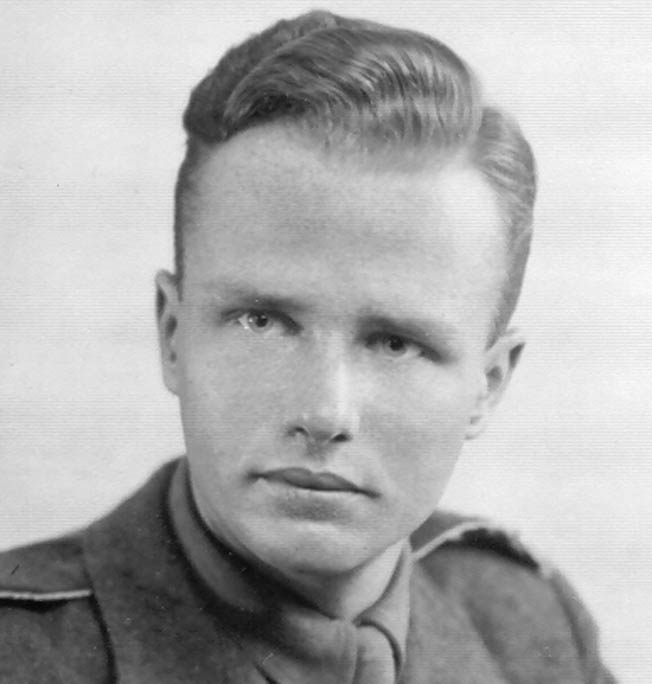
Earning money was even more important. Stripped of his construction empire, Tadeusz pawned family watches and jewelry and became a partner in a second-hand store. He used an alias to remain incognito, and to disguise his appearance, he grew a beard and used different glasses. Bogdan worked in a delivery business, shoe-making plant, toy manufacturing facility, and agricultural seed factory, and he rolled cigarettes for pay. The earnings brought only subsistence living, and the family ate meat just once or twice a year. Like his father, Bogdan learned to blend into the environment to avoid attracting attention. He recalled, “I did not wear any signs that might inspire curiosity—no rings, no military-style cavalry boots, no prewar high school uniform, nothing to indicate that I was anything but a poor, undernourished boy.”
Joining the Resistance
He also joined the resistance movement, helping to distribute an underground newspaper, wholesaled by a married couple who owned a small Warsaw grocery store. This was dangerous: had the Germans caught him carrying the newspaper, the result would have been torture and death. Two months after Mieczkowski began courier work, he was walking to the store to pick up his load of contraband papers when he noticed the place was shuttered, marked with a piece of paper carrying a German eagle and swastika. He briskly walked past the storefront, pretending to be oblivious but surmising that the couple had been caught and executed.
Although it offered hope and tested the Poles’ will to survive, resistance carried perils—as did everyday life. The brutality of the German occupation helped to explain why Poland had the highest casualty rate of any European country during World War II. The Germans viewed Poles as one of mankind’s lowest groups, a subhuman race like Gypsies and Jews, and they held Polish life in dim regard. “To be a Pole was almost—but not quite—the most unfortunate thing a person could be in World War II,” historian James Stokesbury has commented. In Warsaw, Nazi snipers picked off men, women, and children, and Germans also snatched Poles from the streets, torturing and killing them or sending them to concentration camps. Aniela hosted a couple from Bydgoszcz who also sought shelter in Warsaw, and one evening the husband decided to stroll outside just before the night curfew began. He never returned. In this way, the Nazis instilled fear among the Poles, patrolling the city and abducting residents. Once, a German patrol stopped Bogdan on a street. An officer frisked him and removed a wad of papers. Luckily, they were letters he was delivering to a German agricultural office, and the officer let him go.
Stout-hearted Poles kept up the resistance. The Polish AK (Armja Krajowa, or Home Army) began with a small nucleus but eventually totaled 40,000 soldiers, which included about 4,000 women. It took direction from the London-based Polish government-in-exile and throughout the war funneled information on German military activities to the Allies and engaged in anti-Nazi sabotage, including an estimated 27,000 attacks on railroads. Most AK fighters were amateurs with no military training or warfare experience and came from all walks of life. Like Mieczkowski, many were young students who had little to offer but courage, love of country, and a will to fight. They also took crash courses in warfare. After France fell to the Germans in the summer of 1940, Mieczkowski attended resistance meetings. Like any gathering under the occupation, these conclaves were small, and attendees studied military tactics and learned how to operate pistols, grenades, and flamethrowers, usually by reviewing diagrams since they lacked the real thing. Once the Uprising began, Poles relied on captured German arms, Allied supplies, and homemade guns and grenades. Initially, though, like many AK members, Mieczkowski had no weapons, not even a knife.
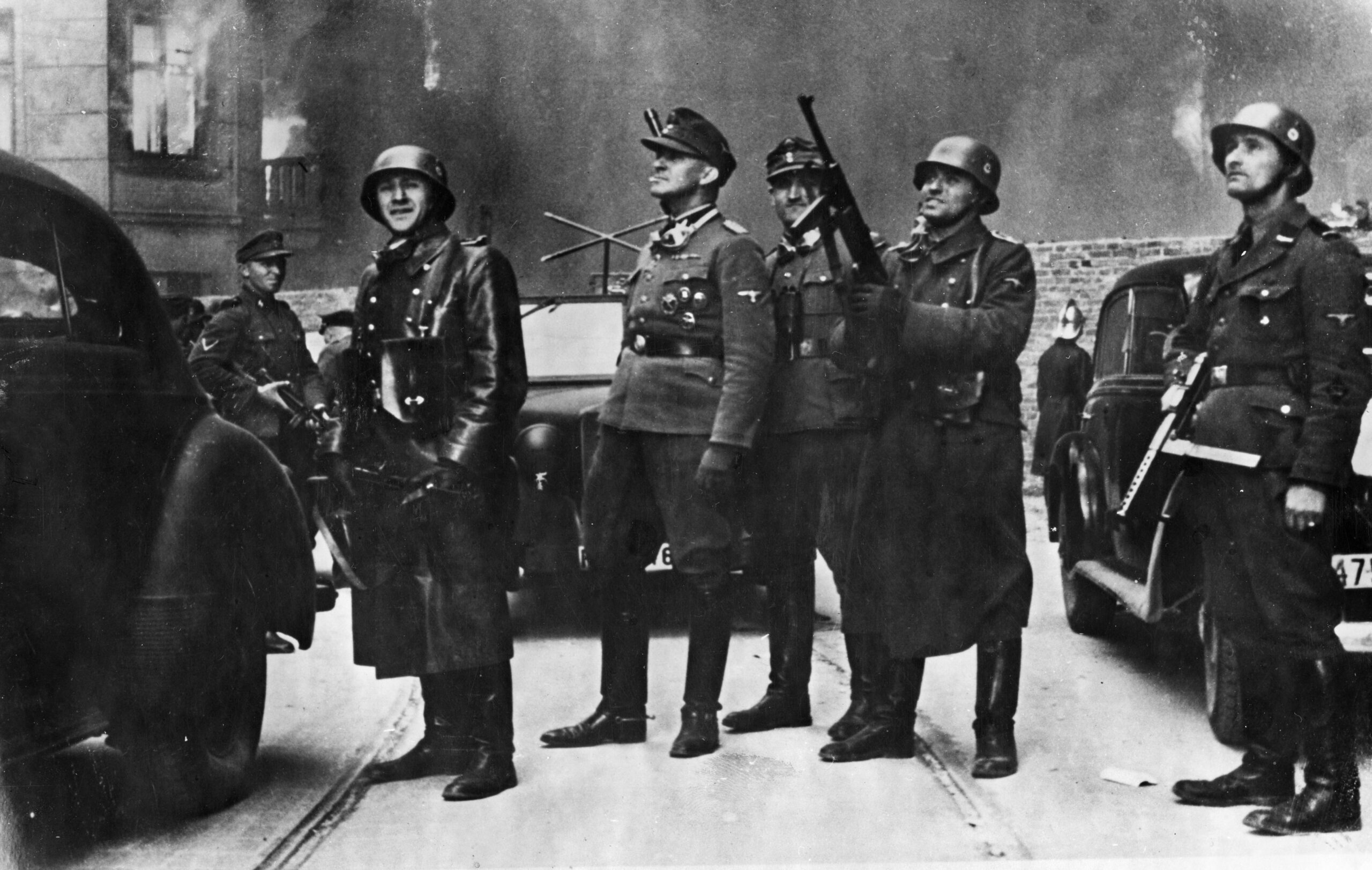
A Distrust of the Soviets
But the goal was ambitious—to rise up and repulse the Nazi occupiers. On August 1, 1944, word came that the resistance would begin, with action to start at 5 pm. The Soviet leadership encouraged the Poles to rebel, and Moscow radio broadcast the start date to coordinate the attack. In the strange alchemy of war, Soviets and Poles had become uneasy partners in fighting a common enemy after June 1941, when Germany invaded the USSR. For the Poles, the Soviets appeared the lesser of two evils, even though their invasion of Poland’s eastern half had been savage. Poles still mistrusted the Soviets—and with good reason.
In 1943, the Kremlin severed relations with London’s Polish government-in-exile after it demanded an investigation of the 1940 Katyn Forest massacre, in which Russians executed 10,000 Polish Army officers, dumping their bodies in a mass grave in eastern Poland. Given their experiences with such treachery and violence, Poles were determined to avoid Soviet control of their country after the war. It was vital, then, for Poles to overthrow the Germans and establish a free government, instead of handing the USSR an opportunity to control the country after the war. At the very least, Poles expected their reward for the Uprising would be a strong bargaining position over their nation’s future. But they expected Soviet help to repel the Germans and, indeed, needed it.
Close Shaves With Death
One of Mieczkowski’s first assignments during the Uprising was to prevent attacks from tanks, the Nazis’ prime weapon, which they used to demolish buildings and ram through AK barricades. For weapons, he had two gasoline-filled bottles with wicks—the famous “Molotov cocktails.” He commanded four fighters in a detachment charged with defending an entrance gate to a building. Mieczkowski tried unsuccessfully to start a nearby car, and he and his men began to push it inside the gate so that they could siphon its gasoline to use in Molotov cocktails. Just as they nudged the car into position, a German tank appeared down the street, swiveling its turret in their direction. Mieczkowski and the others ran into the building.
The car exploded. The tank’s round hit it square-on, the impact sending metal fragments flying everywhere. Inside the building, one comrade gestured that Mieczkowski’s jacket had blood stains. “I could not believe I was wounded because I had not felt anything,” he said, “but the blood convinced me.” He relinquished his command of the unit and sought help at his company’s first aid post, where nurses cleaned and bandaged his wounds (a decade later, in 1955, a chiropractor found shrapnel still embedded in his cheek).
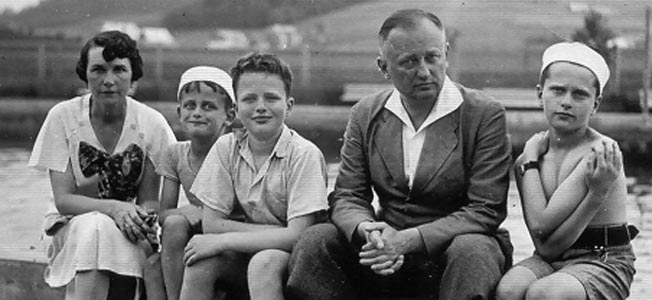
Mieczkowski had more close calls. At one point, he led a detachment that defended the second floor of a building, while the Germans occupied the ground level. After throwing grenades downstairs, he peeked down the stairwell. Seeing nothing but hearing noises, he retreated toward an apartment. Just then, the Germans unleashed a flamethrower attack, and a surge of fire enveloped the staircase. Mieczkowski’s company withdrew to an adjacent building by using a hole in the wall connecting the two structures. Moments after his unit fled, the first building collapsed; the Germans had used a Goliath, a small tank packed with explosives and steered by a wire from a nearby tank. By seconds, Mieczkowski and his men had avoided annihilation.
Injury and Tragedy
The Uprising’s first days went auspiciously for the Poles, who caught the Germans off guard and gained control of 60 percent of Warsaw. But the Nazis counterattacked, forcing them to relinquish their gains. In early September 1944, the Polish command decided to abandon the Old Town section of Warsaw, then receiving a vicious pounding from German infantry and Stuka dive bombers. At this time Mieczkowski, trying to help fellow resistance fighters flee from Old Town, embarked on the ill-fated mission where he lost his right thumb and absorbed shrapnel in his thigh.
After getting shot, Mieczkowski limped back through the dynamited wall, crossed the street, and went to a first aid station. There, a nurse bandaged his thumb and dressed his leg. In searing pain, he walked to a makeshift hospital, located in the basement of a nearby building, where a surgeon stitched his cuts and tried to even out his thumb bone. Doctors operated under horrendous conditions, with minimal medicine and often working with flashlights or candles. This hospital was dark and crowded, and anguished groans filled the air; Mieczkowski left almost immediately. Days later, in a jarring reminder of Nazi air power, a German bomb destroyed the hospital.
Just two weeks after losing his thumb, on the night of September 18, 1944, Mieczkowski fell asleep in the basement of his apartment building, an edifice darkened by the lack of electricity. A bomb blast jolted him awake, and minutes later his younger brother rushed into his cellar room. Their mother, he cried, had just been killed. “I got up as fast as I could, crossed the courtyard and went down to the basement on the other side,” Mieczkowski remembered. “My mother lay on the floor in a pool of blood. She and another woman had been standing at the entrance to the basement, probably enjoying some clean night air, when the bomb struck. Shrapnel entered her back and pierced her heart.” Both women died instantly. Friends carried Aniela’s body to the building’s first floor, where Mieczkowski tenderly cleaned her face of blood. Her front showed no wounds, but shrapnel had gouged a deep hole in her back. Although he and his brother sobbed for most of the night, near dawn they finally fell asleep.
The next day, Mieczkowski and his brothers made a simple casket out of untreated boards and lowered it into the earth. Aniela died at age 49—“in great physical shape, active and caring, the focus of our family,” Mieczkowski recalled. For the next year he felt numb, “letting life pass by without much sense of personal involvement,” he said. “The abortive Uprising added to my feeling of separation from reality.”
The Fall of the Uprising
The Uprising soldiered on valiantly but vainly, with the Nazis tightening their noose around Warsaw. Withering under bombs and ground artillery, Warsaw became a shell of the city it was just weeks earlier, as Germans pulverized a quarter of its buildings, adding to the destruction they had already wrought during the 1939 invasion and the 1943 Ghetto Uprising. For the third time during the war, the city found itself the nexus of conflict, and this combat was the deadliest, with fighting taking place from building to building at point-blank range.
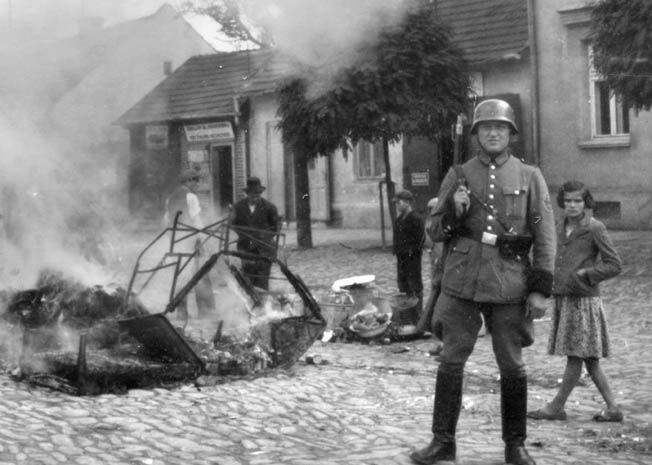
On October 2, 1944, the Poles surrendered. The Uprising had lasted 63 days. The marvel was that it stretched that long, because it involved ragtag fighters, armed with only courage and crude weapons, confronting one of the world’s strongest military machines. All told, 200,000 Polish civilians and 15,000 resistance fighters perished during the Uprising.
By willful neglect and obstruction, Soviet Premier Josef Stalin helped to doom the Uprising. Until almost the end, he refused permission for U.S. and British planes to use Soviet bases and appeared to wait deliberately on the sidelines as the Uprising faltered. The Soviet air force held back, with the result that German bombers unleashed merciless attacks on Warsaw. While resistance fighters knew they faced long odds, they expected Soviet aid, especially since the USSR encouraged the Uprising. Mieczkowski recalled that the Uprising began when the AK heard Soviet guns across the Vistula River, the waterway bisecting Warsaw. But those sounds proved a false harbinger. “We counted on Soviet forces crossing the Vistula and expelling the Germans,” Mieczkowski said, yet that help never came. As historian Thomas Fleming has written, “The Russian army suddenly developed a strange paralysis. It sat on the east bank of the Vistula for two months and allowed the noncommunist Poles to be slaughtered by the infuriated Germans in horrific street fighting.” Stalin’s actions fueled speculation that the Soviets, while ostensibly supporting the Poles, wanted the Germans to crush them, allowing casualties to mount on both sides and clearing the way for Soviet domination of postwar Poland.
Prisoners of War
In an unusual show of leniency, the Germans sent resistance fighters to POW camps scattered throughout Germany rather than exiling or executing them. Mieczkowski waited in a makeshift hospital, housed in a former girls’ school. Within two weeks, horse-drawn wagons took him and other patients to a railroad station, where they boarded freight cars bound for POW camps. Aboard Mieczkowski’s dark car, the embers of resistance still glowed, as jaunty Polish prisoners plied their German guard with enough vodka to make him drunk. Then, as the nighttime train slipped through the Warsaw suburbs, some passengers bailed out. Mieczkowski’s injuries prevented him from making the jump; he stayed aboard.
The train traveled two days and stopped at Zeithein, a POW camp where all the passengers disembarked. The Germans processed them, making Mieczkowski and others formal prisoners of war, many of them taking what became their only showers for the next several months. Now, the fight was for survival. Word spread among the prisoners that next to the camp were buried 50,000 Soviets, most of whom had starved to death, a grisly sign of their future. The prisoners received only a small daily food ration, which comprised two slices of something resembling bread, with the consistency of soft clay. Though it was barely edible, each prisoner had to guard his ration carefully because of potential theft. Meanwhile, Mieczkowski’s thumb wound throbbed with pain, and he learned to adjust to eating, writing, and performing other tasks with a stump where his right thumb used to be.
POW life proved peripatetic. In December 1944, the Germans marched Mieczkowski and other prisoners to Stallag Müelberg. After just two nights, they sent him by railroad to Bergen-Belsen, a POW camp holding about 500 Polish officers, located next to the infamous concentration camp of the same name. After two weeks, they moved him again, this time to a new camp called Fallingbostel, and then days later to the Grossborn camp, located in northern Poland. The colder climate made daily prisoner counts torture, as everyone stood outside for long periods in sparse clothing, without jackets. This stay lasted only a few nights, after which the Germans marched the prisoners to a new camp. It was a bitter January, and during the two-month journey Mieczkowski fought numbness and frostbite while trudging in the snow or riding in cold freight cars. Eventually, he got to his final POW camp—his seventh—Sandbostel, located between Hamburg and Bremen, Germany. There, Swiss Red Cross representatives distributed care packages from the United States and Canada, which braced up wavering spirits; the American parcels were especially coveted because they contained cigarettes, which prisoners used for barter. Amazingly, Mieczkowski even got a parcel from a Polish acquaintance that contained onions he had requested, thinking the vitamin-rich vegetable would stave off beri-beri.
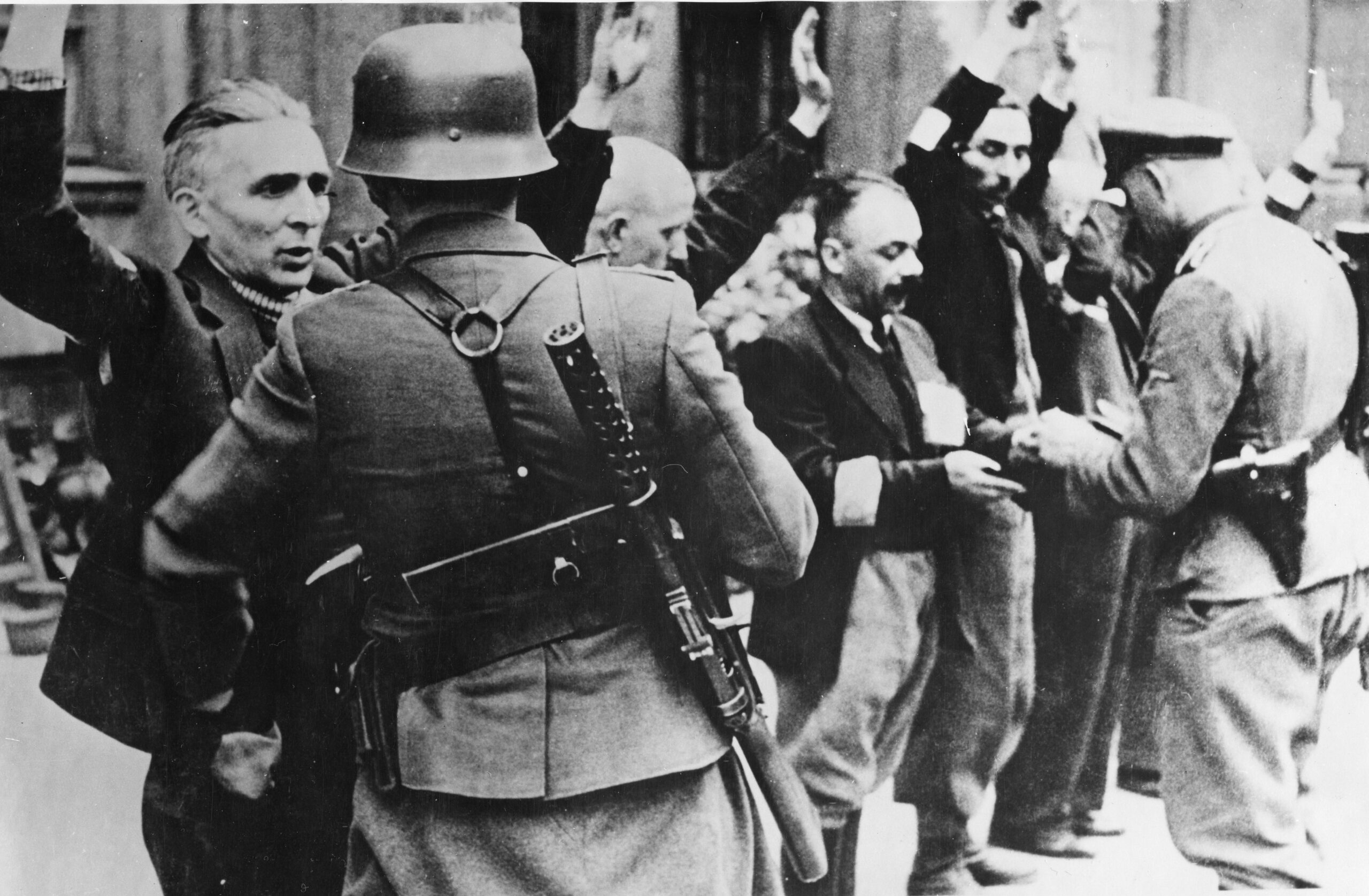
Despite the new lease on life, the camp’s conditions were crowded and harsh, and the food was just bread and what Mieczkowski described as “a stinking soup.” Residents were emaciated and exhausted, and some staggered about disoriented. As days passed, any sense of time ebbed away, and Mieczkowski spent hours in the top bunk of a three-tiered bed, his feet painful from frostbite and his muscles wasting away.
Liberation
By April 1945, Mieczkowski had been in Sandbostel for one month, and to the West he began to hear distant gunfire, especially at night, drawing closer as the weeks passed. Soon he detected the roar of tank engines. The British were coming—and with them, freedom. On May 2, Mieczkowski spotted soldiers clad in brown darting from tree to tree in the neighboring forest. It was a sweet sight: these were advancing British troops, preparing to liberate the prisoners. Realizing their impending fate, the Germans fled; at one point, a military vehicle carrying Nazi officers sped away from the camp, and soon word spread that all Germans had evacuated the premises.
When it came, freedom seemed almost anticlimactic, especially because the British had advanced at a glacial pace and worked slowly even after arriving. For what seemed an eternity, Scottish bagpipers walked around the camp, playing tunes but making prisoners—starving and aching to be released—impatient. The British detained all the prisoners, delousing them with DDT and attempting to establish an identification process. But the freedom was real: after a few days, Mieczkowski and another former prisoner took a long, limping walk, exploring the countryside, observing a British jeep damaged by a road mine and the body of a prisoner killed by an antipersonnel mine—caveats to be careful where to tread.
Settling Down in the West
On May 8, 1945, the war in Europe ended, but for patriotic Poles, the struggle was unfinished. Hopes of a new Poland kindled their desire to return home and build an independent nation, free of Soviet rule. (Suffering a news blackout, most of them knew nothing of the February 1945 Yalta Conference, during which President Franklin Roosevelt and Prime Minister Winston Churchill swallowed Stalin’s pledges to hold free elections in Poland—promises he never kept.) Thus Mieczkowski lunged at the chance to join the Polish II Corps to liberate Poland. After military training in Italy, he sailed to England, where the Polish II Corps had relocated. But by then, the war was truly finished, and Poland’s fate was clear. Stalin clutched the country in his steely grip, and the Polish II Corps was demobilized.
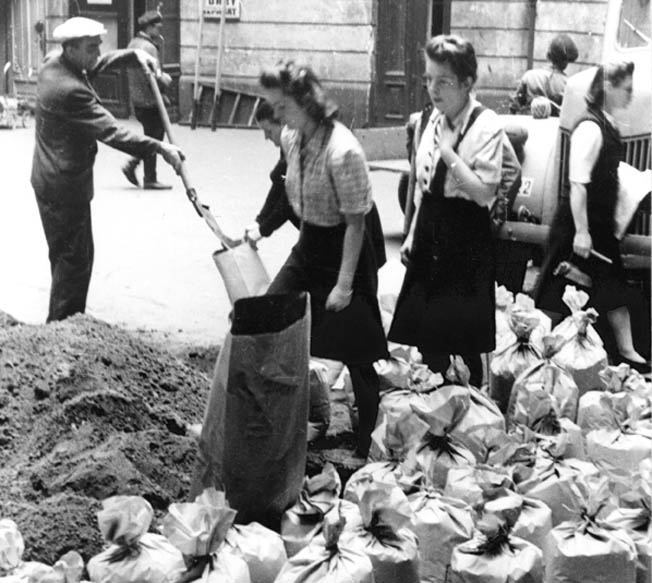
Mieczkowski again had to readjust his priorities. In England, he passed competitive exams to enter the University of London, earning a bachelor’s degree in 1950. He had little desire to repair to Poland under Communist rule, and his mother’s death further soured him on returning. “Going back would have been dangerous folly,” he said. “I concluded that I was a permanent émigré, a person without a country.” His Polish friends felt similarly and emigrated to Australia, Canada, and the United States. (Bogdan’s older brother, Zbigniew, went to Canada, but Tadeusz and Janusz stayed in Poland.) America became Mieczkowski’s dream destination, and in December 1950, his entry visa approved, he boarded the RMS Franconia ocean liner headed for New York. He moved to Chicago, whose large Polish population made him feel at home, and soon enrolled in graduate school at the University of Illinois, where he earned a doctorate in economics in 1955. Eventually, he landed work at a Polish research institute in New York City.
In a sense, New York allowed the war to come full circle for Mieczkowski. There he met Seiko Kawakami, a native of Hokkaido, Japan, who came to the United States to study at Berea College and found a job at a Japanese bank branch in Manhattan. During the war, Kawakami worked at a factory near her hometown of Otaru, making chemical gas masks out of seaweed. (World War II had a profound impact on her family, too: her 17-year-old sister Yasuko died of tuberculosis during the war, and her older brother Suguru joined the Japanese navy and learned to fly Mitsubishi Zero fighters, training as a kamikaze pilot.) As World War II receded into memory, two people who experienced that epochal conflict while oceans apart met in New York City—the crossroads of the world—and later married. Both became college professors, but the war that shaped their youth carved indelible memories. For Mieczkowski, the fight for Poland’s freedom carried a high cost, leaving him wounded and his family broken and destitute. Freedom came not just when he escaped a German POW camp. It came across the globe, in a new country and its promise of a new life.
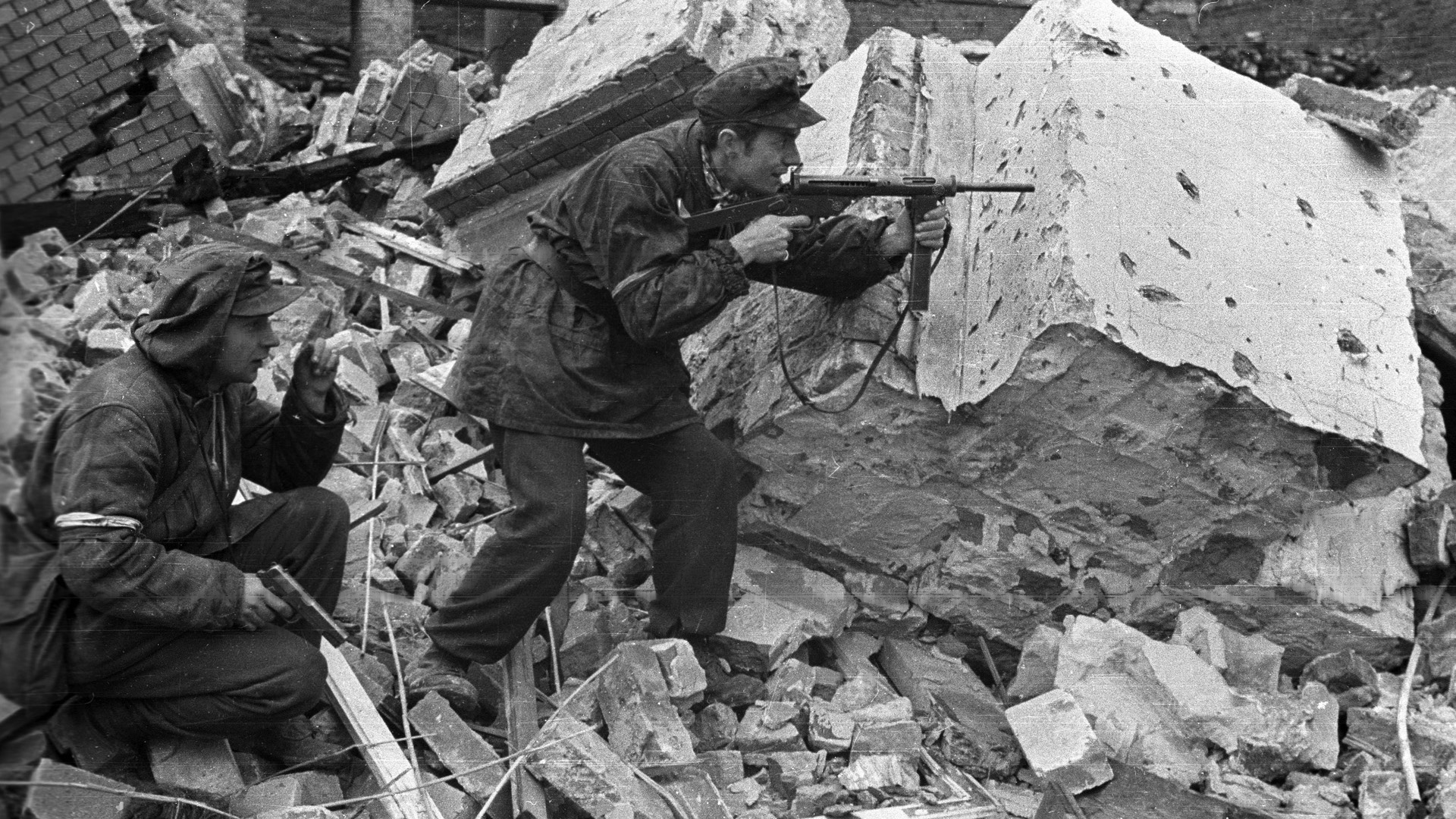
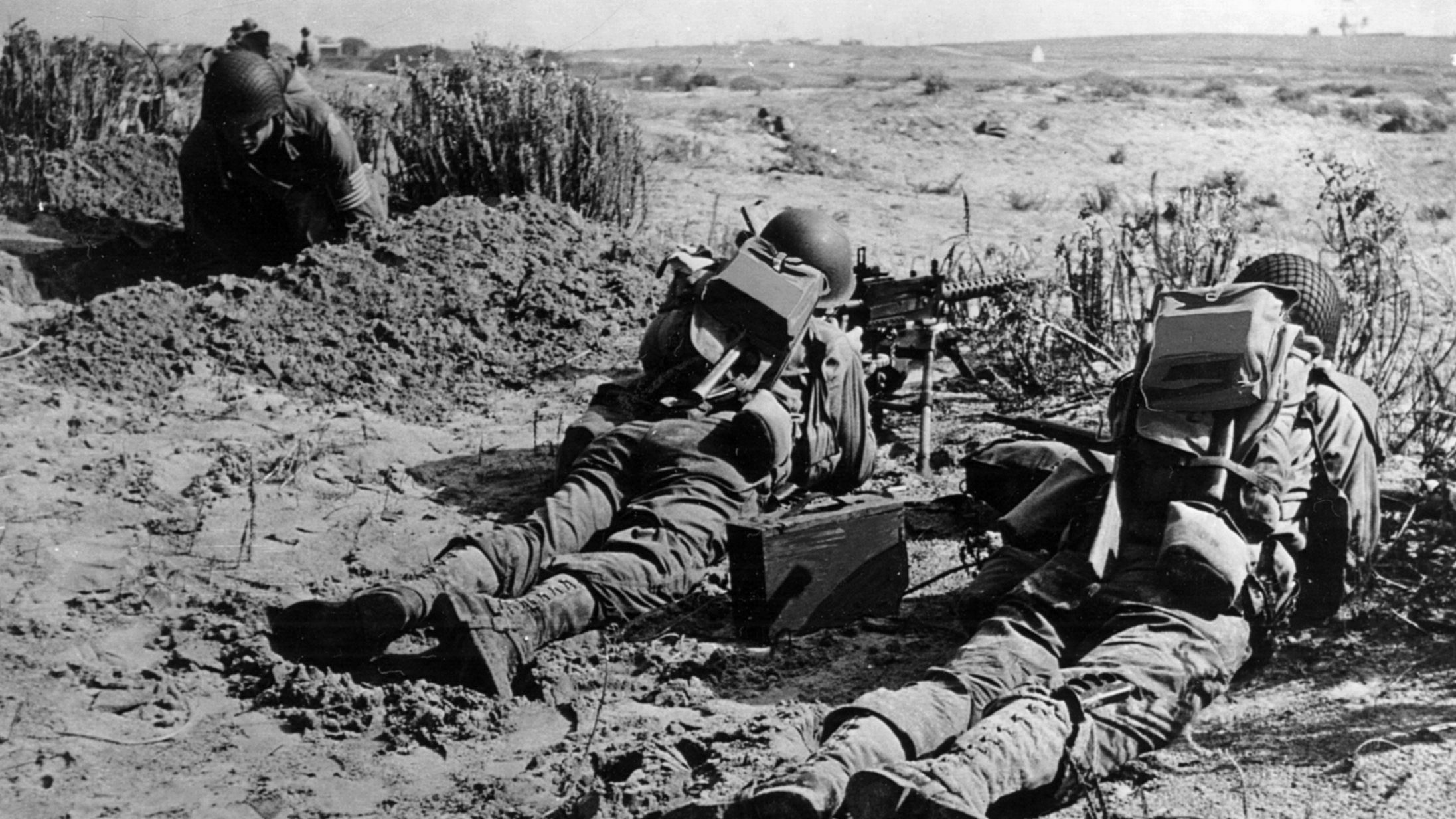
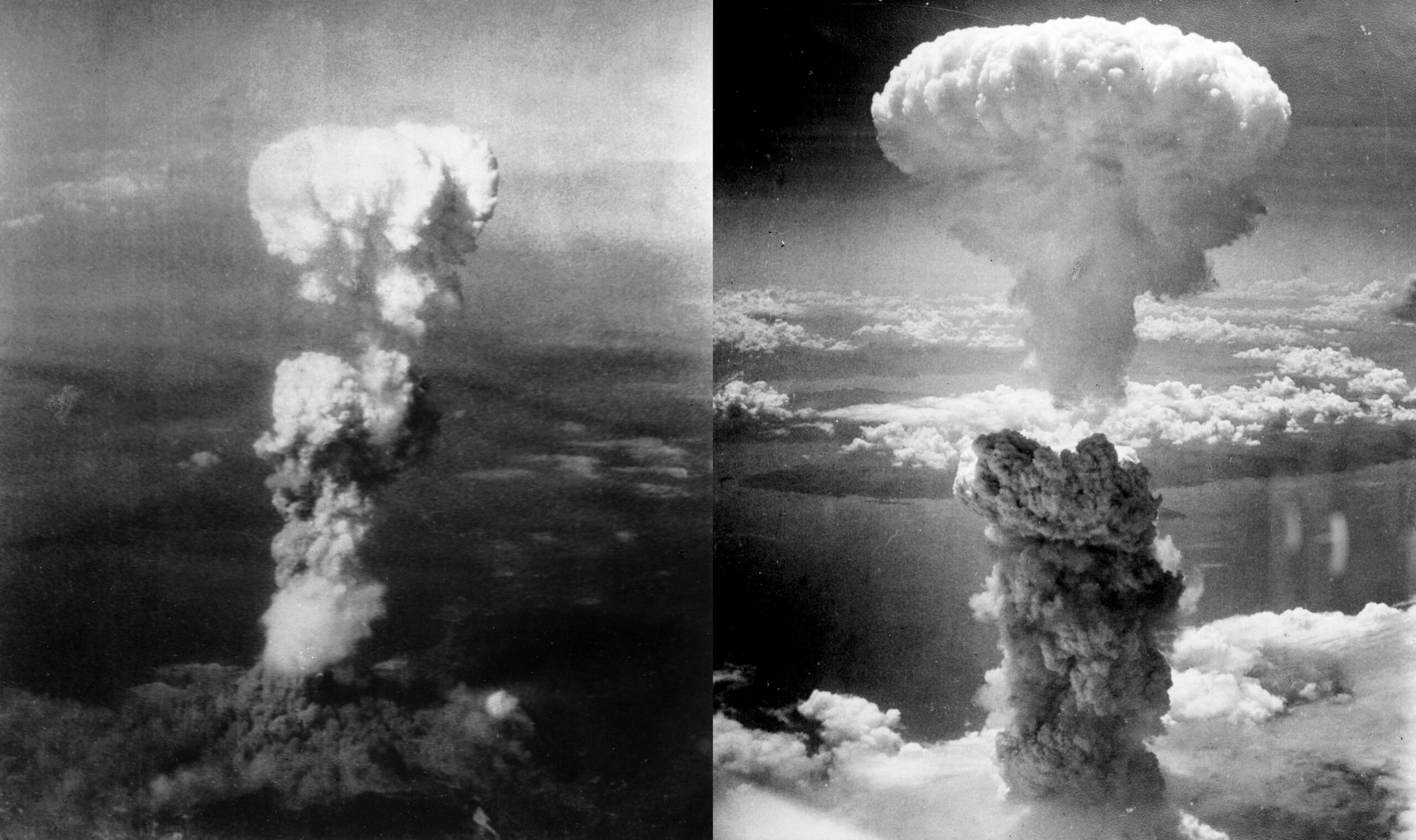
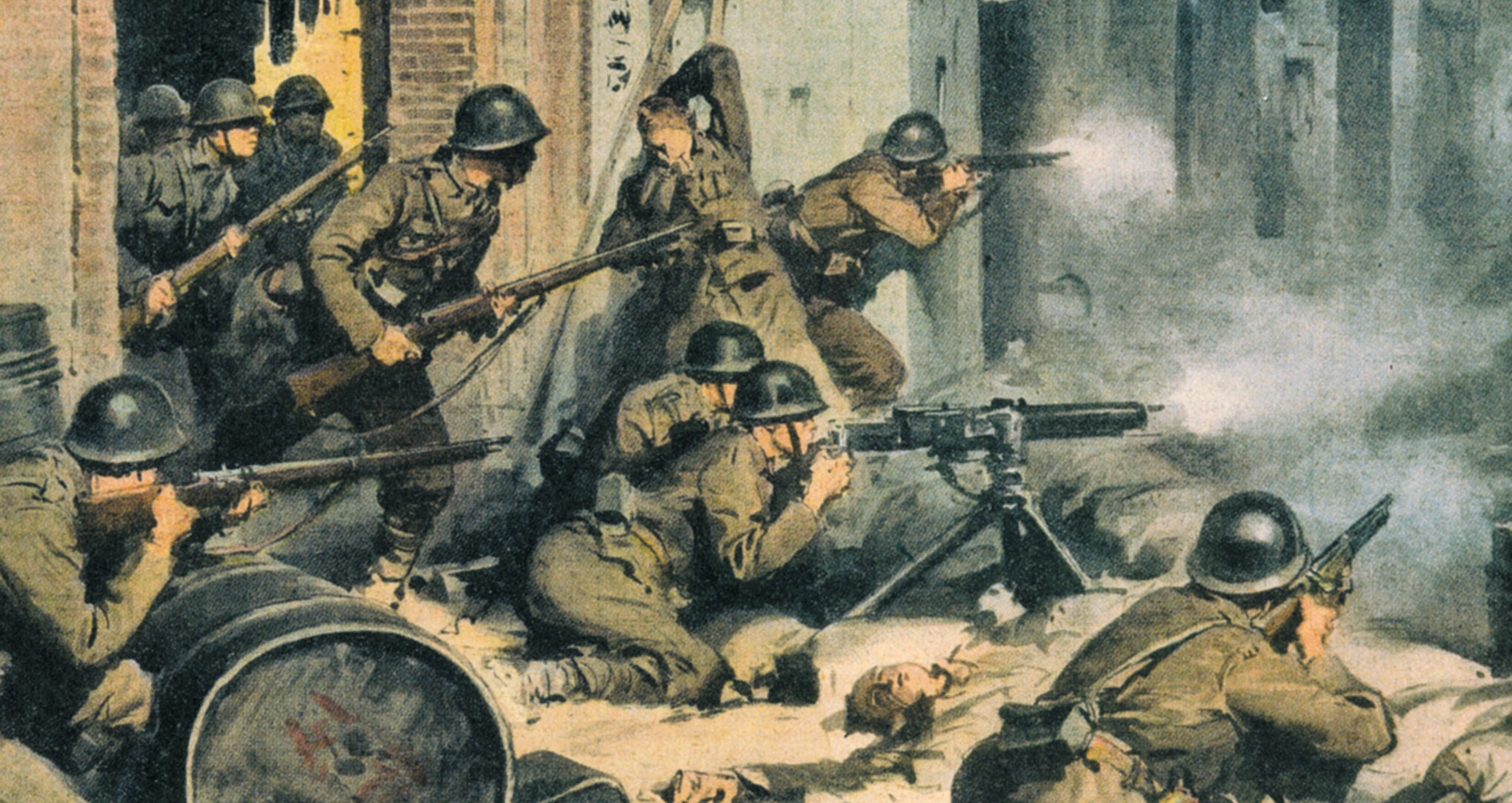
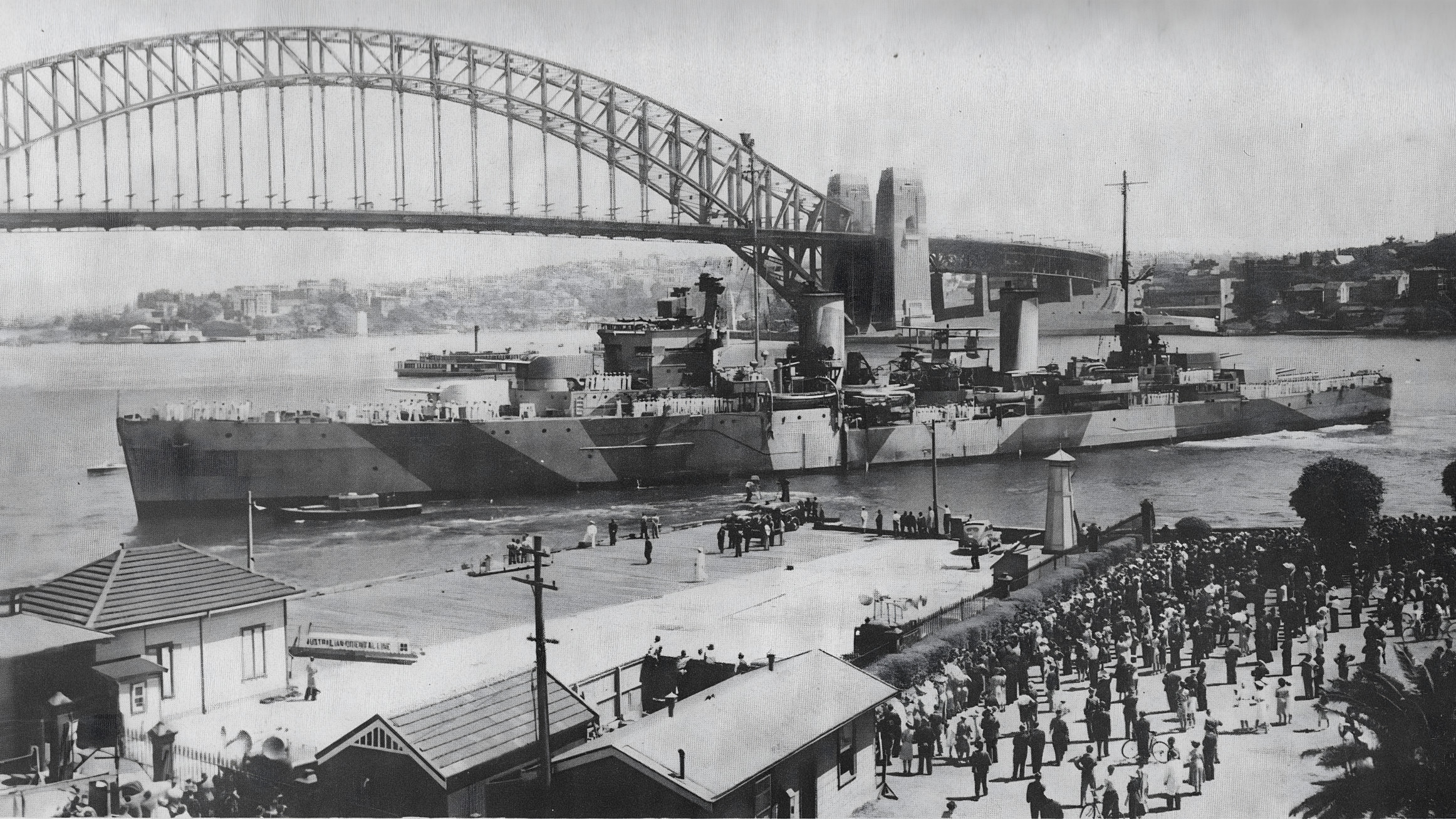
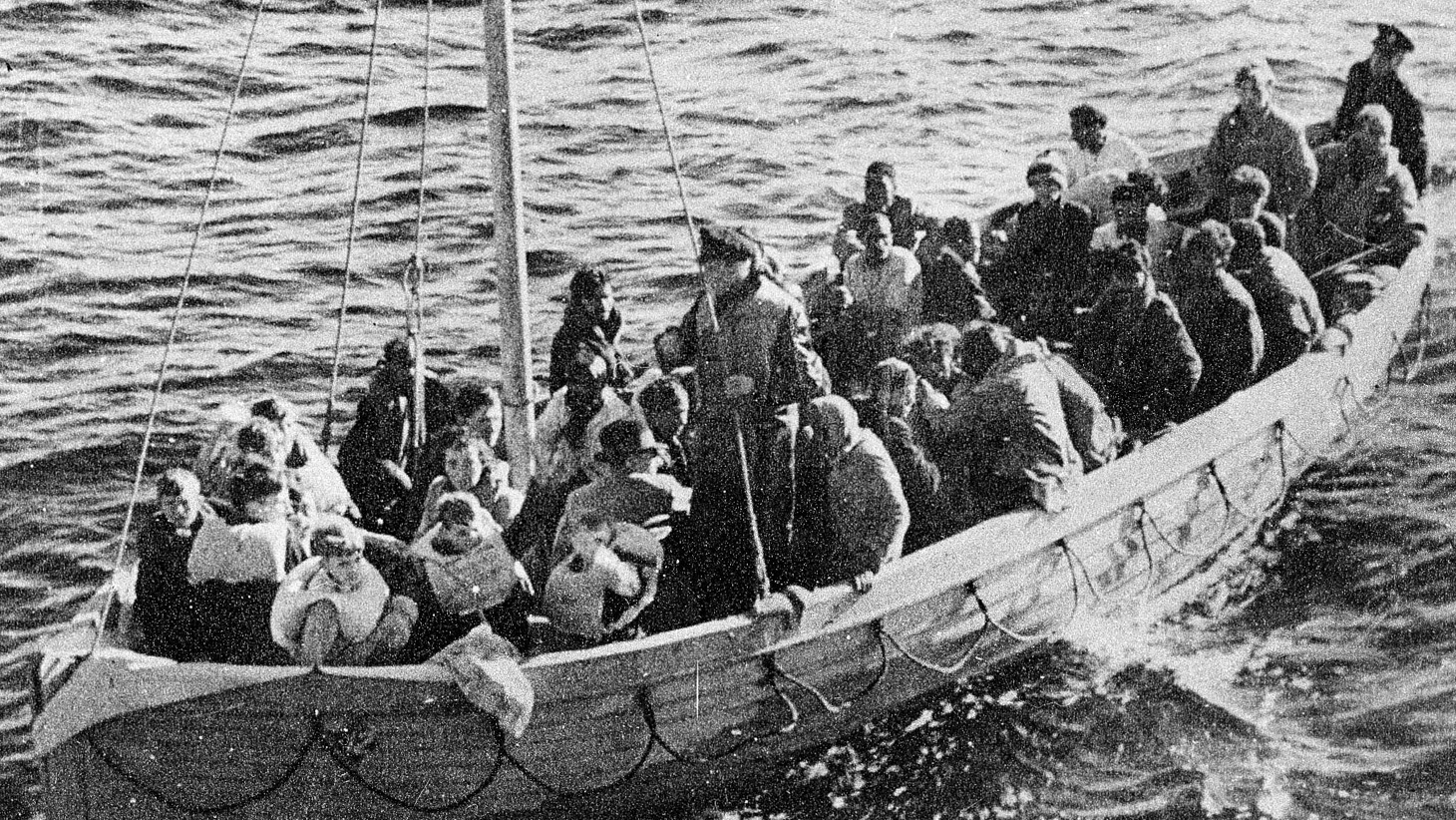
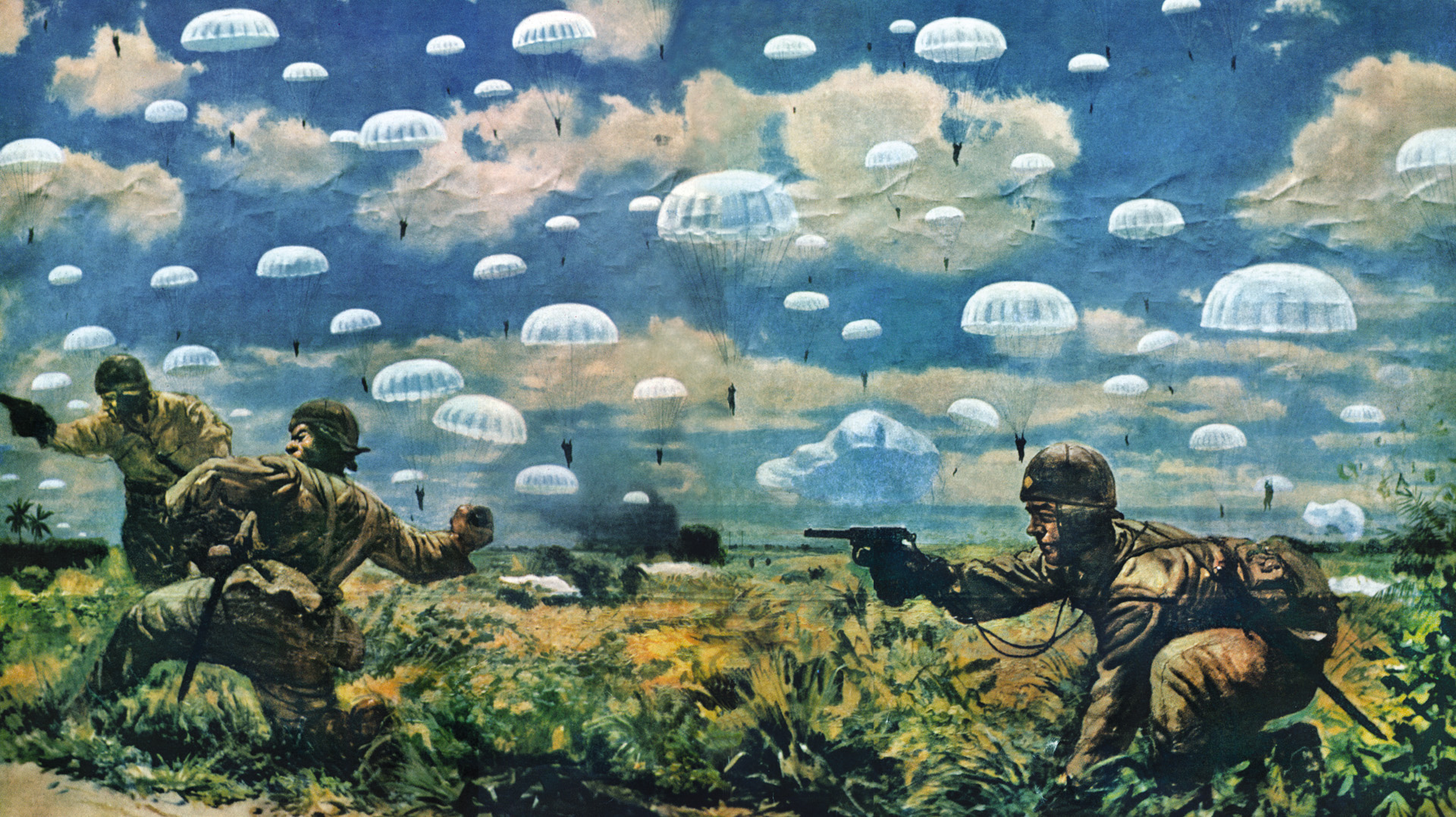
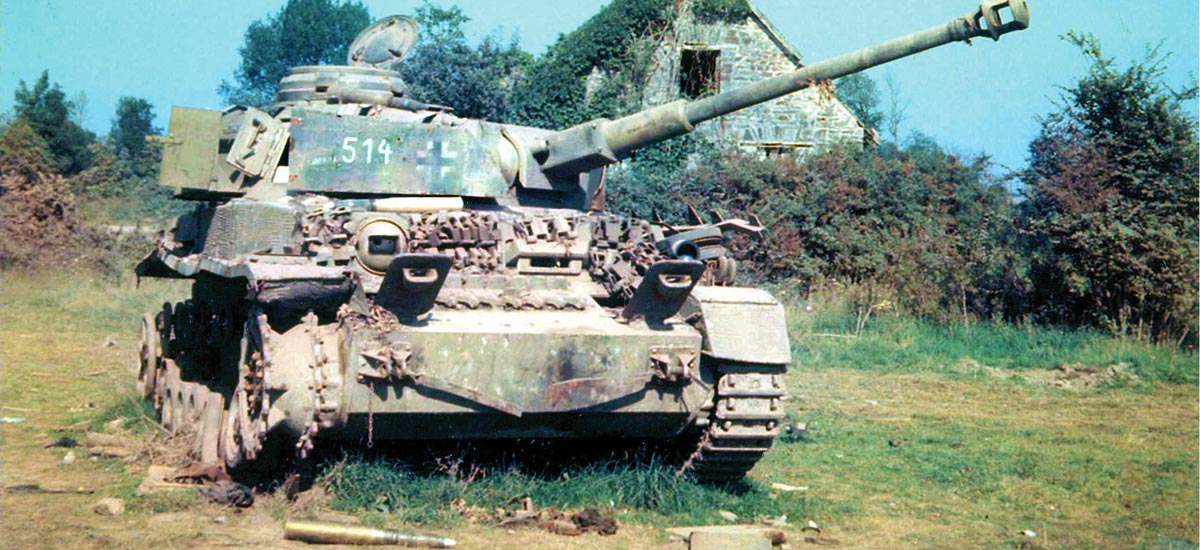
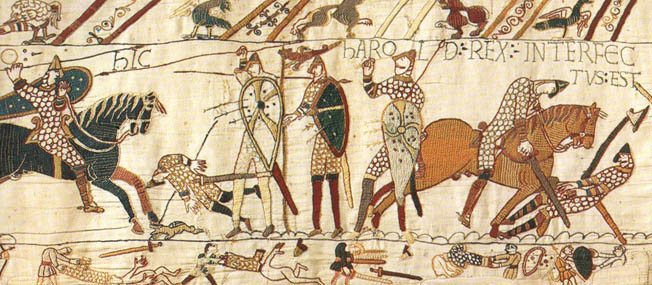
The Polish people have suffered for many years mainly from being geographically squashed between opposing cultures; the polish people I meet in The UK are almost without exception industrious, warm and determined. In many ways they have characteristics one held by The British.
Congratulations! An excellent spotlight on the murderous policies of both the USSR and Germany.
Neither of the sides were any good. I hope they both have short lives.
The third photo is actually not of the Warsaw Uprising at all. It is a very famous photo of Juergen Stroop, the commander of the SS troops in charge of suppressing the Warsaw Ghetto Uprising more than a year earlier, in 1943. Stroop had photographer along to prepare an album for presentation to Heinrich Himmler, which is how the photo of Stroop accompanies by his SS and auxiliary police troops has come down to us.